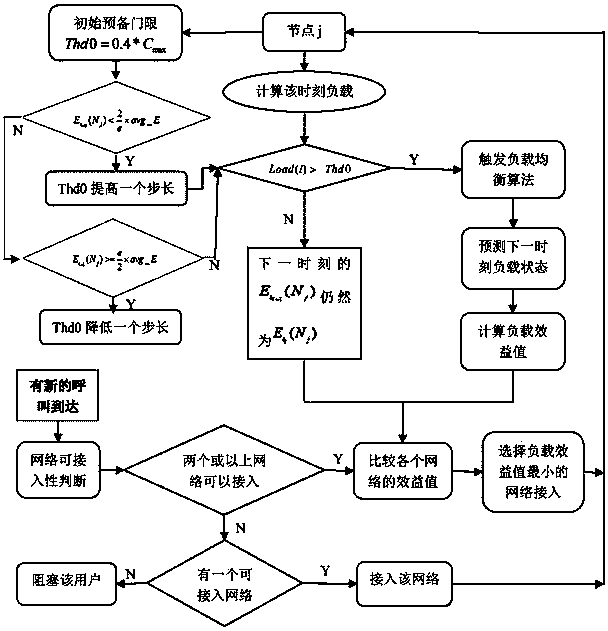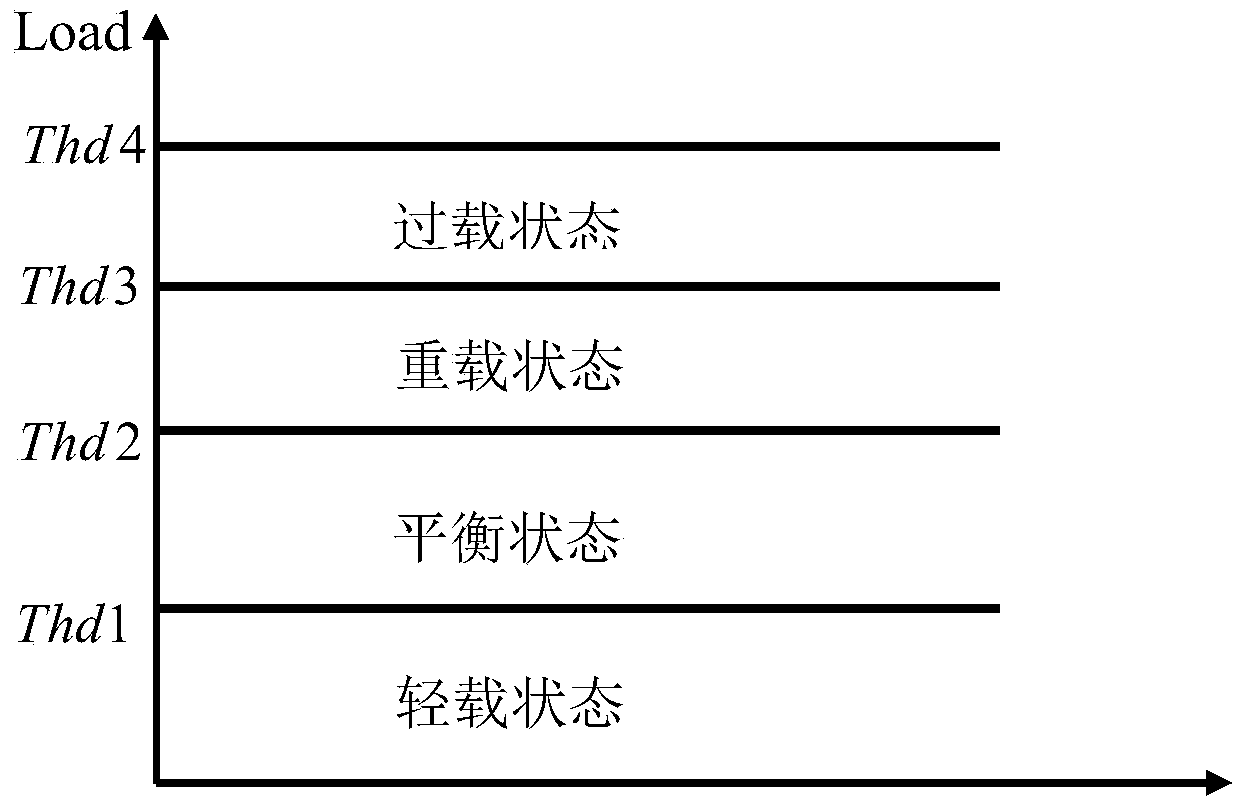Method for self-adaptive load balancing based on future load prediction
A technology of self-adaptive load and balancing method, applied in the direction of network traffic/resource management, access restriction, electrical components, etc., can solve the problems of increased call drop rate, no dynamic adjustment, and affecting Qos of other users, etc., to achieve reduction The effect of spending
- Summary
- Abstract
- Description
- Claims
- Application Information
AI Technical Summary
Problems solved by technology
Method used
Image
Examples
Embodiment Construction
[0034] The invention will be described in further detail below in conjunction with the accompanying drawings.
[0035] Such as figure 1 , figure 2 and image 3 As shown, the present invention provides a kind of adaptive load balancing method based on future load prediction, and this method comprises the following steps:
[0036] Step 1. Definition of load
[0037] In order to uniformly define the load and shield the resource inconsistency of different wireless access technologies, the load is defined as follows:
[0038] load ( i ) = Σ i R b ( i ) R c ( i ) R m ...
PUM
 Login to View More
Login to View More Abstract
Description
Claims
Application Information
 Login to View More
Login to View More - R&D
- Intellectual Property
- Life Sciences
- Materials
- Tech Scout
- Unparalleled Data Quality
- Higher Quality Content
- 60% Fewer Hallucinations
Browse by: Latest US Patents, China's latest patents, Technical Efficacy Thesaurus, Application Domain, Technology Topic, Popular Technical Reports.
© 2025 PatSnap. All rights reserved.Legal|Privacy policy|Modern Slavery Act Transparency Statement|Sitemap|About US| Contact US: help@patsnap.com



